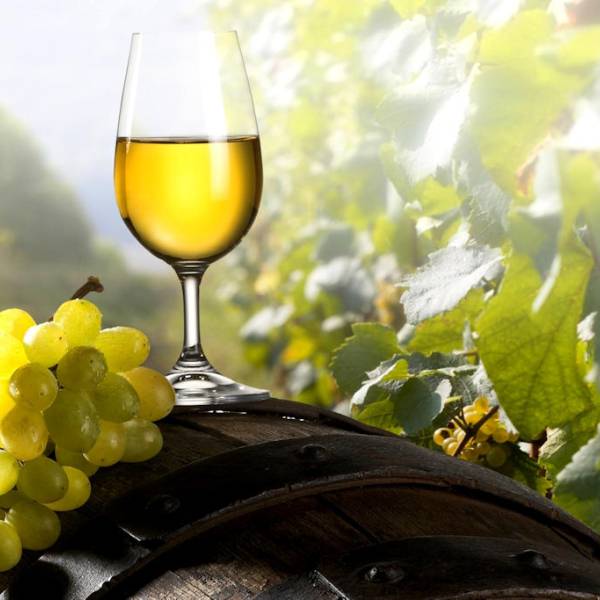Traditionally, red Vinho Verde held a place of prominence within the region, surpassing its white counterparts. It was the wine of choice for the local population, crafted and savored in humble ceramic bowls or cups. Even among the working class of nearby Porto, renowned for its iconic Port Wine, red Vinho Verde found favor and appreciation.
However, over time, various factors contributed to a decline in the popularity and production of red Vinho Verde. The devastating phylloxera epidemic in the late 19th century wreaked havoc on European vineyards, leading to the loss or replacement of many red grape varieties with more resilient alternatives. Furthermore, shifting market demands favored white and rosé wines, particularly in international markets. Consequently, white Vinho Verde became synonymous with the region's style, while red Vinho Verde occupied a more niche position.
Today, red Vinho Verde represents a mere fraction of the total wine production in Minho. While cherished by locals and enjoyed within Portugal, it remains relatively undiscovered by international wine enthusiasts. Nevertheless, a passionate group of producers is devoted to reviving and promoting red Vinho Verde, recognizing its unique and exceptional qualities that authentically reflect the region's terroir and cultural heritage.
Red Vinho Verde captivates with its light-bodied nature, low alcohol content, vibrant acidity, and a striking deep purple hue, occasionally accompanied by a subtle effervescence. Delicate yet distinct, the wine reveals delightful aromas and flavors of wild berries, sour cherries, plums, pepper, and herbs. Typically dry or off-dry, sweeter variations also grace the diverse spectrum of red Vinho Verde.
Unlike wines intended for extensive aging, red Vinho Verde is meant to be enjoyed young and chilled, capturing the essence of its vitality. Its refreshing and quaffable nature makes it an ideal companion for warm summer days. For those seeking an added touch of effervescence, red Vinho Verde can be mixed with lemonade or soda water to create a lively spritzer.
The production of red Vinho Verde stems from red grape varieties cultivated within the Minho region, renowned for its cool and humid climate as well as its granitic soils. The region encompasses diverse sub-regions, each contributing its unique microclimate and soil composition to the resulting wine's style and quality.
Vinhão, also known as Sousão, reigns as the primary red grape variety, accounting for approximately 80% of the red plantings. This teinturier grape possesses both red skin and flesh, imparting the wine with an intense and dark coloring. Additional red grape varieties utilized in the creation of red Vinho Verde include Azal Tinto, Amaral (also known as Azal Bravo), Borraçal (also known as Mourisco), Espadeiro (also known as Espadeiro Mole), Padeiro (also known as Padeiro de Basto), Pedral (also known as Pedral Tinto), and Rabo de Ovelha (also known as Rabo de Anho).
The grapes, harvested by hand or machine, find their way to the wineries, where they undergo careful destemming and crushing. Subsequently, fermentation occurs within stainless steel tanks or traditional stone lagares, large open vats. Employing a brief fermentation process at low temperatures preserves the wine's inherent freshness and fruity characteristics. Some producers opt to introduce carbon dioxide during fermentation, imparting a delicate effervescence to the final product.
Following fermentation, the wine undergoes filtration before being promptly bottled, without the need for additional aging in oak or other vessels. Bottles are sealed with screw caps or natural corks, preserving the wine's quality and integrity. This swift production process ensures that red Vinho Verde can be enjoyed shortly after bottling.
Lisbon.vip Recommends
Consider the following delectable food pairings, which enhance the unique qualities of red Vinho Verde:
- Grilled sardines or mackerel: The wine's acidity and lightness beautifully complement the rich flavors of these grilled seafood delicacies.
- Roasted pork or lamb: The vibrant acidity of red Vinho Verde harmonizes with the succulent and savory meat, creating a delightful balance.
- Sausages or Chouriço: The wine's fruitiness and refreshing nature counterbalance the richness of these flavorful cured meats.
- Bacalhau à Brás: A traditional Portuguese dish consisting of salted cod, potatoes, eggs, and olives. The wine's acidity and herbal notes enliven the flavors of this iconic dish.
- Caldo Verde: A Portuguese soup prepared with kale, potatoes, and Chouriço. The wine's acidity beautifully cuts through the soup's richness, elevating each spoonful.
- Cheese, especially soft and creamy varieties like brie or camembert: The fruity and slightly effervescent nature of red Vinho Verde creates a delightful interplay with the creamy textures and subtle flavors of these cheeses.
- Fruit desserts, such as apple pie or berry crumble: The wine's bright fruitiness complements and echoes the flavors of the sweet, ripe fruits in these desserts.










